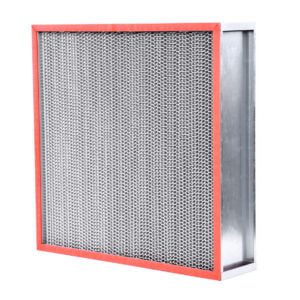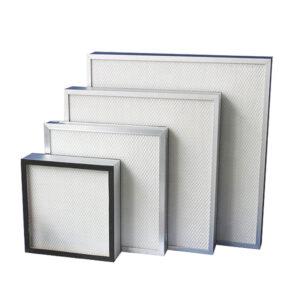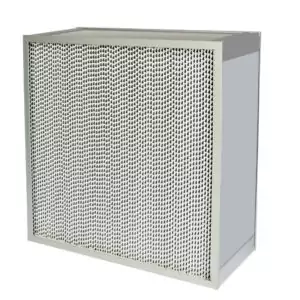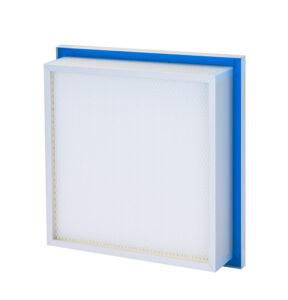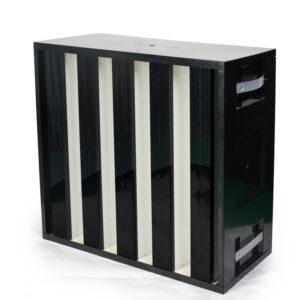In the world of precision and purity, where industries like pharmaceuticals, biotechnology, electronics manufacturing, and aerospace thrive, cleanliness is not just a virtue; it’s a necessity. Cleanrooms, these meticulously controlled environments, are the guardians of purity. But what’s the secret behind their pristine ambiance? It’s the arsenal of cleanroom equipment. Join us as we embark on a journey to unravel the world of cleanroom essentials.
1. HEPA Filters: The Air Purity Guardians
HEPA (High-Efficiency Particulate Air) Filters are the unsung heroes of cleanrooms. They play a pivotal role in maintaining air quality by removing particles and contaminants from the air. These filters are the bedrock upon which clean air quality stands.
2. Laminar Flow Hoods/Benches: Crafting Sterile Environments
Imagine a symphony of filtered air, where every note is purity. Laminar flow hoods and benches orchestrate this symphony, providing a pristine environment for activities like sterile compounding in pharmaceuticals or electronics assembly.
3. Glove Boxes and Isolators: Barriers Against Contamination
In the realms of pharmaceutical and biotechnology cleanrooms, glove boxes and isolators act as impenetrable barriers. They shield operators from sensitive materials, ensuring contamination remains at bay.
4. Air Showers: The Purity Gateway
Before stepping into the sanctum, there’s a ritual—a dance with purified air. Air showers are the gateways that cleanse personnel and equipment, ensuring nothing impure enters the cleanroom.
5. Cleanroom Garments: Armor Against Contamination
Cleanroom suits, gloves, shoe covers, and head covers serve as the armor for those who enter. They form an essential line of defense against human contamination.
6. Pass-Through Chambers: Maintaining Clean Transfers
For the seamless transfer of materials and equipment in and out of the cleanroom, pass-through chambers provide a bridge that preserves cleanliness.
7. Particle Counters: Guardians of Cleanroom Standards
These devices are the vigilant watchers, measuring and monitoring the number and size of airborne particles. They play a critical role in maintaining cleanroom standards.
8. Environmental Monitoring Systems: Real-Time Guardians
Temperature, humidity, particle counts—these are the parameters that the environmental monitoring systems track in real-time. They ensure that the cleanroom environment remains within the specified limits.
9. Cleanroom Furniture: Minimizing Particle Generation
From tables and chairs to storage cabinets, cleanroom-compatible furniture is designed to minimize particle generation while facilitating cleanroom operations.
10. Lighting: Illuminating Without Contaminating
Specialized lighting fixtures in cleanrooms are engineered to minimize particles and contaminants, ensuring both visibility and cleanliness.
11. Cleanroom Air Handling Units (AHUs): Regulating the Atmosphere
Controlling temperature, humidity, and filtration within the cleanroom is the task of cleanroom air handling units. Equipped with HEPA filters, they maintain a controlled airflow pattern.
12. Flooring: A Foundation of Cleanliness
Cleanroom floors are constructed with materials like epoxy or vinyl, which are easy to clean and resistant to particle generation.
13. Wall and Ceiling Panels: The Smooth Guardians
Cleanroom walls and ceilings are made from materials like PVC, stainless steel, or other non-porous substances. They are easy to clean and don’t generate particles.
14. Monitoring and Control Systems: Ensuring Precision
These systems manage and maintain the cleanroom environment, regulating temperature, humidity, and airflow. They also alert operators to any deviations from the norm.
15. Cleaning and Disinfection Equipment: Tools for Purity
Tools and chemicals designed specifically for cleanroom cleaning and disinfection protocols ensure that cleanliness is not just achieved but sustained.
16. Fire Suppression Systems: Protecting Without Contaminating
Specialized fire suppression systems use clean agents to extinguish fires, leaving no residues that could contaminate the cleanroom.
17. Security Systems: Control and Monitoring
Access control systems, security cameras, and personnel identification systems help control and monitor who enters the cleanroom, ensuring only authorized personnel gain access.
18. Emergency Equipment: Ensuring Safety
Safety showers, eye wash stations, and fire extinguishers are essential components for worker safety in case of emergencies.
The specific cleanroom equipment required varies depending on the industry, cleanroom class, and the processes conducted within. Designing and outfitting a cleanroom is a meticulous process, tailored to meet the specific cleanliness requirements of the intended application. Regulatory standards, such as ISO 14644 for cleanroom classification and maintenance, play a crucial role in the equipment selection and design process.
Conclusion
Cleanrooms are the sanctuaries of precision and purity, where the quality of products and processes is non-negotiable. The array of cleanroom equipment discussed here is the backbone of these controlled environments. Each component plays a vital role in maintaining the desired levels of cleanliness, ensuring that industries like pharmaceuticals, biotechnology, electronics manufacturing, and aerospace can achieve the pinnacle of quality. The next time you encounter a cleanroom, remember the silent heroes—cleanroom equipment—working diligently to maintain the sanctity within.
Frequently Asked Questions (FAQs)
1. How are cleanrooms classified?
Cleanrooms are classified based on the number and size of particles allowed per cubic meter of air. Classification standards, such as ISO 14644, define different classes, with Class 1 being the cleanest and Class 9 allowing the highest particle count.
2. What industries require cleanrooms?
Industries such as pharmaceuticals, biotechnology, electronics manufacturing, aerospace, semiconductor manufacturing, and healthcare require cleanrooms to maintain strict cleanliness standards.
3. What is the purpose of environmental monitoring systems in cleanrooms?
Environmental monitoring systems track parameters like temperature, humidity, and particle counts in real-time, ensuring that the cleanroom environment remains within specified limits and alerting operators to any deviations.
4. Why are HEPA filters essential in cleanrooms?
HEPA filters are crucial in cleanrooms as they efficiently remove particles as small as 0.3 microns, ensuring that the air remains clean and free of contaminants.
5. How do cleanroom pass-through chambers work?
Pass-through chambers allow for the transfer of materials and equipment into and out of the cleanroom without compromising its cleanliness. They maintain a seal while items are passed through, preserving the cleanroom’s integrity.
Related Contents:
- Bag-In/Bag-Out (BIBO) Systems: Operation and Maintenance Guide
- Ranking the Best “Cleanroom” Air Filter Brands of 2023
- Innovative Fan Filter Units for the Next Generation of Cleanrooms
- The Cleanroom Experience: A Guide to Safe and Efficient Operations
- Understanding the Mechanics of Fan Filter Units: A Detailed Guide
- Fan Filter Units: A Comprehensive Solution for Cleanroom Air Purification
- Fan Filter Units for Semiconductor Cleanrooms: A Must-Have Solution
- Achieving Precision and Cleanliness: The Power of Fan Filter Units
- Fan Filter Units: Key to Quality Control in Cleanroom Manufacturing Processes

















